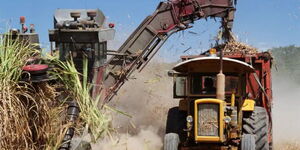Amaranth, previously regarded as a common weed, penetrated the Kenyan market following a shift in government policies that compelled maize farmers to incorporate other nutritious grains into their farming routines, with the sole purpose of curbing malnutrition.
The crop commonly known as Mchicha has gained popularity due to its profitability and ability to fetch quick money.
With its impressive nutrient profile and health benefits, farmers were quick to adopt it as only a few were privy to its success before the government's intervention.
Research conducted in Uganda on Efforts to Promote Amaranth Production and Consumption established that Mchicha grains contain protein content of 12-13 per cent, higher than that of most cereal grains. This makes it one of the most sought after grains globally.
The health benefits of Amaranth grains include helping cancer and diabetic patients due to the richness in fibre, protein, manganese, magnesium, phosphorus, and iron.
Other uses of amaranth include being used to make skin cosmetics and animal feeds.
Amaranth green leaves in most Kenyan households are cooked and eaten as vegetables. Health experts explain that they are a good source of protein, vitamin A, Vitamin C, and fibre content.
With increased demand and low supply, the pricing of Amaranth has attracted most farmers to embrace its farming which is clearly paying off.
Amaranth Monetary Value and Varieties
Amaranth grain has two main varieties, short and tall varieties. The short variety matures faster taking between 45-60 days while the tall variety takes between 70-120 days.
They are recommended for low and high rainfall areas. It requires minimal attention and is attacked by a few pests and diseases. Once established, it can withstand acute drought conditions.
With proper tilling and maintenance practices, an acre can fetch up to 800 –1200 kilograms.
According to M-Farm, a kilo of amaranth is priced at around Ksh200-300. Most local companies buy the amaranth products directly from farmers.
M-Farm further tabulates that in that period of between 45-120 days of proper farming, a farmer can fetch up to Ksh360,000 an acre.
Despite its high monetary value, there are some challenges that dim the lights of many farmers who have embraced amaranth fully.
Research done by Agricultural Productivity Project showed that the main challenge faced by farmers is lack of certified seed, inadequate information on production and management of the crop, and poor linkage to markets.
"There is a need to empower farmers with grain amaranth farming skills and organise them into collective and marketing groups so that they can take full advantage of the existing market demand for the crop.
"Diversification of the market through value-added products by the use of simple techniques and technologies can help in solving the marketing problem," Agricultural Productivity Project stated.












